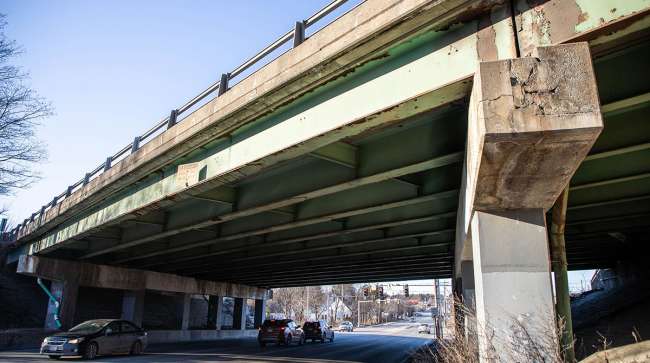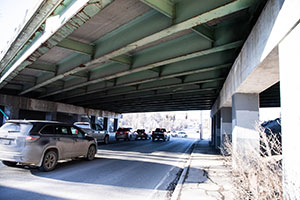Staff Reporter
Maine Sets $1.8 Billion Plan for Infrastructure Upgrades

[Stay on top of transportation news: Get TTNews in your inbox.]
Three steel bridges in Maine that cross Interstate 95 and date to the Dwight Eisenhower administration are included in a $1.8 billion plan to overhaul some of the state’s transportation infrastructure.
The Maine Department of Transportation on Jan. 18 released a three-year plan covering calendar years 2022-2024 that lists projects the agency will deliver or coordinate. Included are 235 bridges and 115 miles of highway construction or rehabilitation.
The expenditures will focus on maintaining and improving Maine’s 8,800-mile state-jurisdiction highway network, which forms the backbone of its transportation system.
Work Plan Final12!20!2021 by Transport Topics
Maine’s roadways are vital to the state’s freight network, which includes seven Class II and III railroads, four airports, three seaports and two intermodal terminals. But trucking is its dominant mode for freight shipments, accounting for nearly 90% of all freight tonnage moved to, from, within and through the state, according to Maine DOT.
Among key sectors, forest products, seafood, agricultural and other commodities are transported on Maine’s highway systems. In addition, international trade with Canada is important in the state’s freight movements.

Deterioration is apparent on this I-95 bridge that runs through Bangor. (Maine Department of Transportation)
One of the three I-95 bridges, a 146-foot-long span that crosses through Bangor, carries an annual average of 40,000 vehicles per day. (The state’s DOT does not specify vehicle types that cross the bridge.) When this bridge was built in 1960, I-95 was located on the outskirts of Bangor between farming and residential areas. Now it’s in the city center, connecting to four interchanges.
A federal grant will pay for nearly 80% of the $19.8 million price tag for this bridge replacement, noted Paul Merrill, communications director at Maine DOT. This aging bridge is critical to the regional flow of goods and services to the northern half of Maine, according to DOT.
The other two bridges, which carry I-95 through Waterville, were built in 1959. Each is 138 feet long, and together they carry a daily average of 27,440 vehicles.
According to DOT, these bridges and others must be replaced due to substandard geometry, roadway width and clearance issues, bridge foundation problems that can lead to undermining, cracked and deteriorating piers and insufficient bridge capacity.
Across the entire plan, DOT’s highway and bridge capital projects include:
- 235 bridge projects ($631 million)
- 115 miles of highway construction and rehabilitation ($155 million)
- 353 highway safety and spot improvements ($237 million)
- 1,057 miles of preservation paving ($462 million)
- 2,162 miles of light capital paving ($111 million)
The plan’s funding will involve an influx of federal dollars from the federal infrastructure law that was signed in November, combined with state and local funds to end the state’s traditional “MacGyver” mode of “doing the best it can with what it has,” said Bruce Van Note, Maine DOT commissioner.
Other funding is coming from $106 million in two general fund initiatives allocated to Maine DOT in 2021 by Gov. Janet Mills and approved by the state Legislature. Also, voters in November backed a $100 million transportation bond to provide a much-needed state match for federal and other funds to support Maine DOT’s capital production.
Van Note said that “for the first time in many years, it feels like we can begin to consider moving from reactive patching to proactive planning.”
Want more news? Listen to today's daily briefing below or go here for more info:




